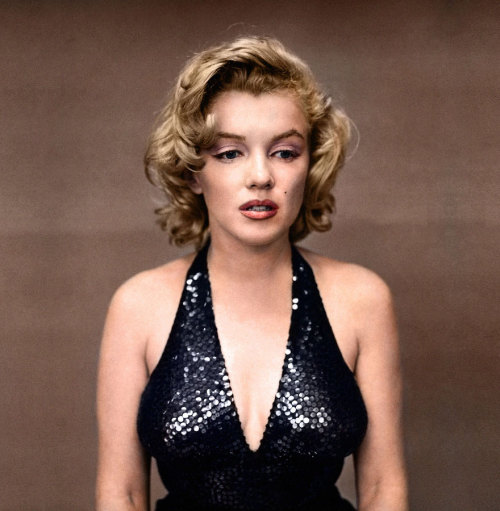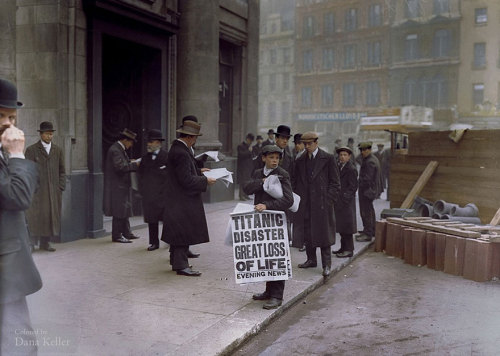Transsexualism is the latest example of a difficult truth: Everything you thought was a category is actually a continuum.
The interview. When I started watching Diane Sawyer’s interview with Bruce Jenner (as he was still calling himself in late April), I can’t say I was fully comfortable either with transsexualism in general or with the idea that the hero of the 1976 Olympics [see endnote 1] thought of himself as a woman.
I sort of understood transsexuals in the abstract, or at least I could repeat the right words: For some reason nobody can adequately explain, the gender that society assigns you (based on your genitalia) just feels wrong; you think of yourself as a woman with a penis or a man with breasts and a vagina. Jenner described the feeling in Christian terms: feeling like he had “the soul of a female”.
But as someone who has a hard time pointing to his own soul or tracing its outlines, I can’t really claim I know what that means. At times I have felt like a dissenter from various aspects of male culture — the violence, say, or the joy so many men take in humiliating others — but I have always experienced myself as reaching for a different kind of masculinity (just as so many women in my generation reached for a different kind of femininity) rather than rejecting the whole concept. I’m not sure what it would mean to not feel like a man “inside”. I’m like the fish who hears another fish say that swimming in water just feels wrong, that he was meant to fly through the air. And I respond, “Water? What is water?”
In my personal life, no one has forced me to come to terms with transsexualism. More than one of my casual friends has a child who has adopted a new name and a new pronoun. But learning that name has been about all the adjustment required of me. Occasionally I have found myself in a social setting with someone whose gender was ambiguous — combining breasts with a beard, say. And I have been uncomfortable, but what I mainly felt was fear of making a social error. My discomfort manifested as a desire to be somewhere else, not to harm that other person or make him/her be different.
So I was perhaps the perfect target audience for the Sawyer/Jenner interview. The distance — identifying through a screen with Sawyer sitting across from Jenner — was about right for me to put aside my discomfort and listen with empathy as he (at that time, Jenner was still using the masculine pronoun and talking about “her” as a person he had not yet revealed to the public) discussed his decision to create a new public identity as a woman.
First reactions. After watching that interview, a few things seemed obvious to me:
- At 65, Jenner is old enough to know what s/he wants.
- Jenner gave masculinity a fair shot. If it hasn’t worked, it hasn’t worked. In some ways, his external success — being an Olympic hero, trying marriage with three gorgeous women, fathering six and step-fathering four “wonderful, wonderful children” — makes the case clearer. A less successful person with Jenner’s inner life might have blamed himself and said: “Masculinity would be fulfilling if only I were better at it.”
- Sixty-five is a do-or-die point for a lot of things in life. If there’s something you’re going to regret not trying, you better get on with it.
- If Jenner’s kids and step-kids are OK with the transition [2], why should the rest of us object?
 So this week, Jenner’s new female identity — Caitlyn — made her public debute with an Annie Leibovitz portrait on the cover of Vanity Fair. (Looking at that photo, I assume Kim Kardashian is happy with the way Caitlyn “rocks it”. [2])
So this week, Jenner’s new female identity — Caitlyn — made her public debute with an Annie Leibovitz portrait on the cover of Vanity Fair. (Looking at that photo, I assume Kim Kardashian is happy with the way Caitlyn “rocks it”. [2])
Not pink and blue, red and blue. The public reaction has generally split on political lines. Liberals like me have mostly praised the courage it took to go public with something this controversial, while the conservative reaction has been described by the Washington Post as “apocalyptic“. The American Family Association’s Bryan Fischer said on his radio show:
If you want one snapshot of just how corrupt, how morally corrupt, how morally bent, how morally twisted, how morally confused, how morally bankrupt we have become, all you’ve got to do is take a look at the cover of Vanity Fair magazine.
Matt Walsh wrote for The Blaze:
It’s all so evil and so bizarre and so unthinkably ridiculous that no dystopian sci-fi writer could have predicted that the collapse of western society would look like this.
President Obama has praised Jenner, while Republican candidates to replace him have either said nothing or lined up against her. (Lindsey Graham is the exception. And while the WaPo article lists Hillary Clinton as “generally supportive”, I can’t find a quote.) Mike Huckabee has been particularly interesting to watch, as he defended the Duggar family’s handling of their son’s abuse of his sisters (but then removed their endorsement from his web page), while trying to make a joke out of transsexualism.
The social-conservative base that the Republicans need to appeal to has been anything but silent. All you have to do is pick any of the links above and read the comments. They’re not just opposed, they’re actively hostile about it.
Why? Now, part of me (and probably part of you) is saying, “What else is new? Conservatives are rejecting somebody for being different from them, sometimes in very aggressive, insulting ways. Par for the course.” But it’s worth considering all the reasons that it didn’t have to be this way.
- Jenner is one of their own. In the Sawyer interview, Jenner self-describes as a conservative Republican who “believes in the Constitution”. Jenner talks about God creating his male body and female soul, and thinks seriously about what mission God had in mind for that combination. And Jenner is not just a nominal Christian, but has a real relationship with a congregation. In the WaPo, a minister describes how the Jenner/Kardashian family was “an integral part of this nondenominational evangelical church” and put considerable effort into founding a new church in their neighborhood.
- There’s really no scripture about this. You’ll search in vain for a verse that says, “A man shall not become a woman.” (If God foresees all, why wouldn’t He have included that verse in His scripture?) The Bible assigns different roles to men and women (not always consistently), and Deuteronomy 22:5 bans cross-dressing (though this rabbi interprets that ban in a limited way). But as for spelling out how you tell whether God meant for you to be male or female, the Bible is silent. Biblical verses supposedly condemning transsexualism all require a lot of interpretation. What motivates people to do the work necessary to arrive at that conclusion?
- It’s not our business. We all have the option to say, “I wouldn’t do that, but I guess it takes all kinds.” In Thomas Jefferson’s words, Jenner is neither picking my pocket nor breaking my leg.
- It’s a freedom thing. Who knows, maybe Caitlyn has made a mistake she will eventually regret. But she’s risking her own future life and happiness, not yours or mine. People following their own vision and risking it all for a goal that seems important — that’s something conservatives usually admire.
- Jenner is a great family-values story. When unexpected challenges arise in the life of one of its members, does a family pull that person closer or push him or her away? The Sawyer interview shows Jenner embedded in a matrix of close family relationships, and the family supports Caitlyn. I’ve got to admire that, and you’d think people who define their politics around “family values” would too.
So there’s plenty of room for conservatives to support Jenner, or just to shrug and move on. But clearly they don’t want to do that. Why not?
What I think is going on. When I look at my own initial discomfort, I think it traces back to a source so basic that it’s pre-verbal. Before I can talk about it, I need to tease it out. So bear with me while I seem to go off on a tangent.
The human mind is kind of a kludge. It has to be. After all, how is a three-pound piece of meat supposed to make sense of such a vast and complicated universe? One of the kludgy short-cuts our minds take is to break the world into categories, i.e., to clump different things together and treat them the same. Many of those categories are binary: male/female, child/adult, right/wrong, friend/enemy, and so on. Others have more options. (In grade school I was taught that there are three races of humans: caucasian, negroid, and mongoloid.) Some of the categories seem in-born, while others are taught to us so early they might as well be. For example, a certain amount of species recognition is practically hard-wired. Kids at an early age will tell you that two dogs are similar while a dog and a cat are different.
We really, really want to believe that the categories in our heads are objective descriptions of the world out there, but science keeps telling us that they aren’t. For example, there are no races, but rather a continuum of genetic difference. If you pluck two people from distant parts of the continuum, they may look like members of distinct races, but in the world as a whole, you won’t be able to trace any boundary line between those races.
Similarly, species are not platonic ideals, but clusters in the genetic continuum. So (contrary to Plato) there is no ideal horse or dog, just lots of individual horses and dogs, any two of whom resemble each other. There are no gay people and straight people, but rather a continuum of bisexuality. There are no nationalities — a point made very strikingly in a fascinating book called The Discovery of France. And like nationalities, modern languages are largely political constructions. In medieval Europe, for example, each village would have a dialect slightly different from the next. If you plucked people out of distant places on that continuum — say one from Paris, another from Madrid, and a third from Lisbon — they would sound like they were speaking different languages you could call French, Spanish, and Portuguese. But, like races, there were no boundaries where one butted up against the other — until politics created those boundaries and imposed them.
And now we are discovering that gender is a binary categorization imposed on an underlying continuum with multiple dimensions. It’s more complicated than just John Waynes with penises and Marilyn Monroes with vaginas.
If you think seriously about how flawed the fundamental building blocks of our thinking are, it’s scary. At any moment, some part of the Universe you’ve been assuming away could come back to bite you. That’s the human condition.
That’s why we get such an oogy feeling whenever we see an example of something we were raised to think didn’t exist: an effeminate man, two women kissing, a child with dark brown skin and frizzy red hair. It’s a reminder that we don’t really grasp the Universe; we just apply kludgy notions that more-or-less work most of the time.
What social conservatism is. At its root, social conservatism is a way to deny that fear and transmute it into anger. Conservatism reassures us that the categories in our heads are real. We didn’t make them up; God created them. They’re natural.
You can see that principle operating across the board. For example, that’s why social conservatives have such a hard time accepting evolution: If species are real things and if humans evolved from some other kind of primate, then each being in that mother-to-child chain belonged to a species. Somewhere along that line, the impermeable boundary between species had to be crossed: an ape mother gave birth to the first human child. Impossible!
Likewise abortion. The moral worth of a member of the human species is a unitary thing. It can’t develop gradually along a continuum, but has to exist either in its entirety or not at all. And a fetus is either a member of the human species or not. We aren’t allowed to recognize that in its early stages, a human fetus is virtually indistinguishable from the fetus of a pig or cow, or that it begins to differentiate from a chimp fetus even later.
This reification of the categories is why conservative rhetoric is obsessed with the word real: real men, real Americans, real conservatives. Liberals are more likely to describe themselves as authentic. Authentic is a relative word; it points to a harmony between what I am and the image I project. Real is absolute; I am a real X because I match an ideal definition of X that exists eternally in the mind of God.
Now, not even social conservatism can deny the existence of things that don’t fit neatly into the proper categories. But it can reject them as abominations. The list of abominations depends on the categories you were raised with: Men attracted to other men are abominations. Women who operate heavy machinery are abominations. Families who cross from black to white are abominations. Americans who can’t speak English are abominations. Mixed-race people are abominations. Genetic engineering produces abominations.
Functionally, an abomination is anything that causes confusion by making us doubt our categories. And by labeling it as an abomination, we transform our doubt and confusion into anger at whatever confused us.
So: Caitlyn Jenner is an abomination. Just by existing, she creates confusion about the kludgy notion of binary gender. She points out that there is more in Heaven and Earth than is dreamed of in our philosophies … or our religions. That’s a scary idea, and by raising it, she becomes an object of anger.
[1] I remember eating Wheaties out of a box with Bruce Jenner’s picture on it. In the 1970s, (moreso than today, for some reason) the Decathlon was a legend-making Olympic event. Americans who won it — Jim Thorpe and Bob Mathias, for example — were famous for more than just a four-year cycle. They became the defining image of the perfect all-around athlete. Physically, they were what every American boy was supposed to want to become.
Bruce Jenner was a record-setting Olympic Decathlon champion, and he arrived at a moment in history when white males were starting to feel insecure about their athleticism. Black sports heroes (Jesse Ownes, Joe Louis, Jackie Robinson) had once been tokens, freakish exceptions who were “credits to their race”. The next generation of black athletes (Wilt Chamberlain, Jim Brown, Willie Mays) claimed their place in the mainstream. But by the mid-70s, it was white players (Rick Barry, Dave Cowens) who looked like tokens in the NBA, and the NFL and MLB seemed headed in the same direction. Blacks would never be great quarterbacks, we told each other. But secretly we wondered if there would ever be a white running back on the level of O. J. Simpson, Tony Dorsett, or Walter Payton. (According to this CheatSheet.com top-ten list, the answer was no.) Even the last American Decathlon champion (Rafer Johnson) had been black.
And then came Bruce Jenner, the hero we needed at the time we needed him. A white man’s white man. Or so we thought.
[2] The most amusing reaction Jenner reports came from step-daughter Kim Kardashian. Following a “breakthrough” conversation with Kanye West (of all people), Kim became “by far, the most accepting” of the children. Jenner quotes her volunteering to help shape Caitlyn’s style:
Girl, you gotta rock it, baby. You gotta look good. If you’re doing this thing, I’m helping you. You’re representing the family. You gotta look really good.


























































